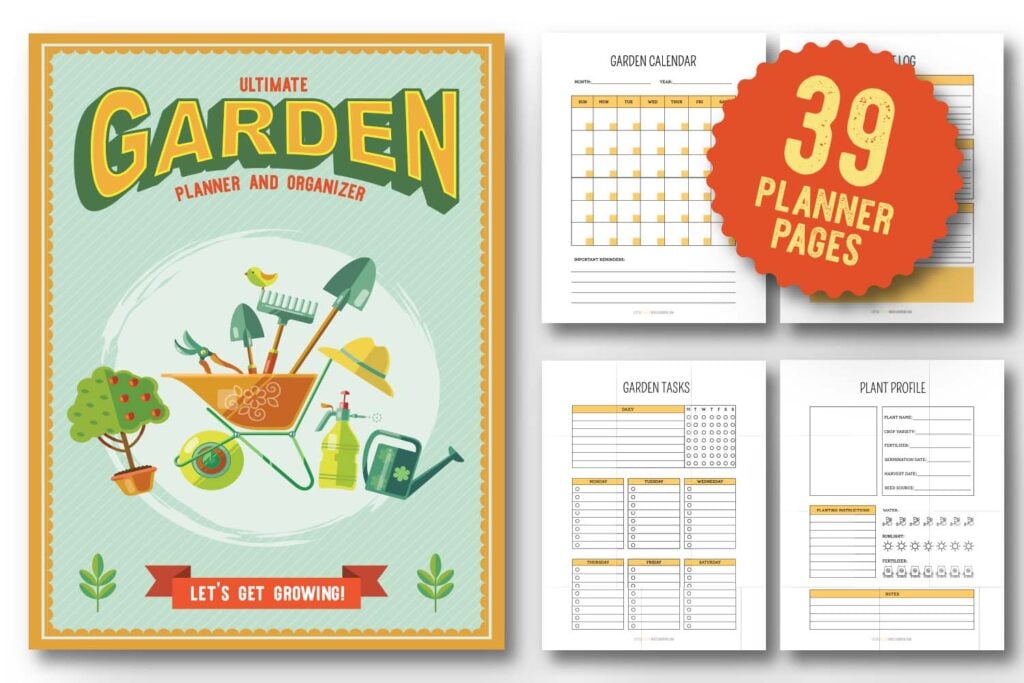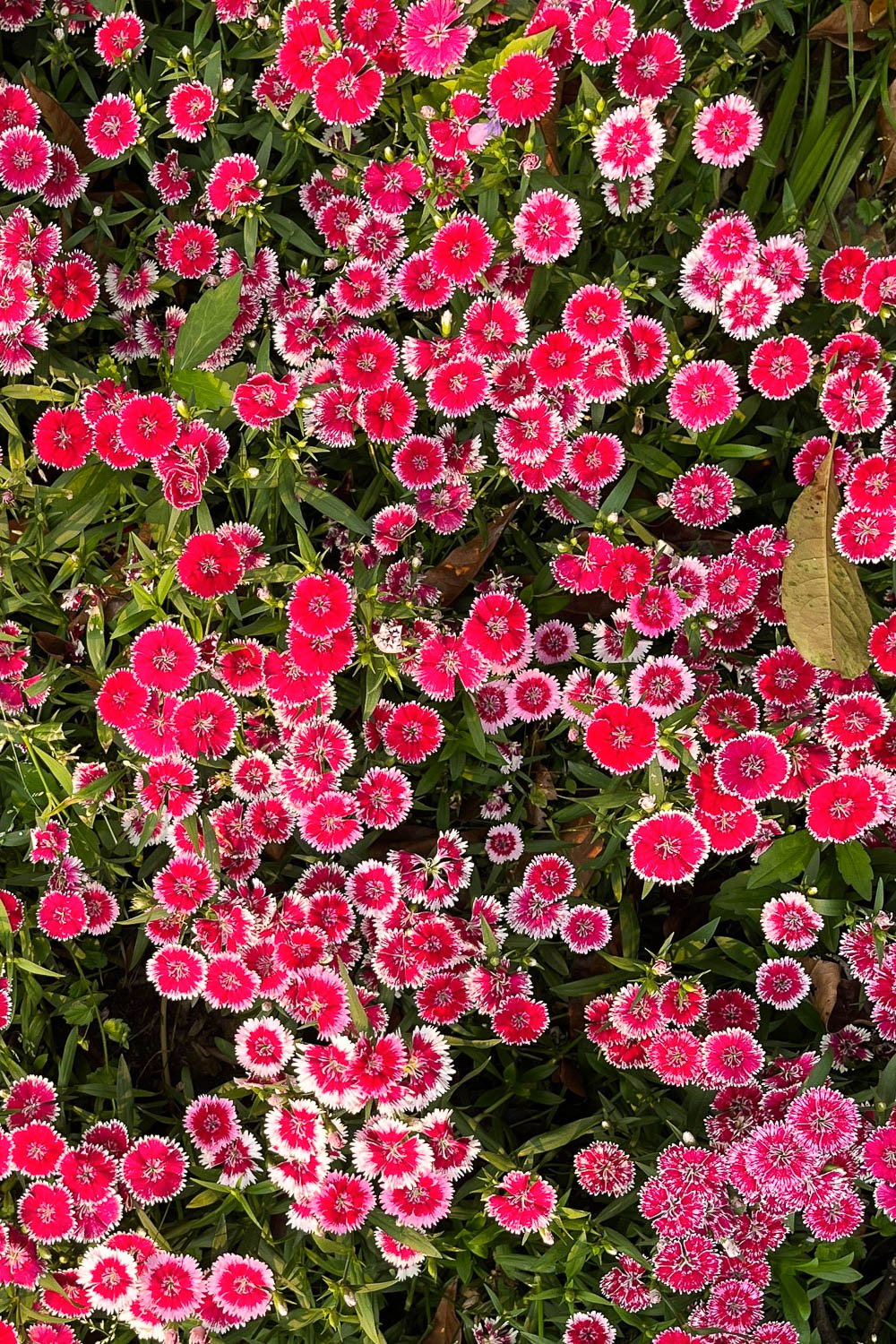Bringing Life to Your Garden with Easy To Grow Biennials
Perennials and annuals get all the attention, but what about garden biennials?
Whether you’re a seasoned gardener or an absolute beginner, biennials are the perfect way to add color, interest, and charm to your garden without much difficulty.
In this article, we’ll dive into the wonderful world of garden biennials and explore their characteristics, the best varieties to plant, and how to care for them to ensure they bloom.
So, grab your gloves and prepare to plant some biennials in your garden this spring.

What Is a Biennial Plant?
A biennial is a plant that completes its entire life cycle in two growing seasons.
Some biennials readily self-seed and return year after year, much like perennial plants, but the original plant will only last through a two-year growing cycle.
Biennial flowers are likely the most common plants you think of when discussing biennials, but many vegetable and herb biennials are also used for seed production.


The Biennial Life Cycle
The entire life cycle of a biennial consists of two growing seasons:
Biennial plants typically focus on creating and establishing their root system and leaves in the first growing season. The plant will also grow and store energy for the next growing season.
During the second season, the biennial will shift its focus to blooming and producing flowers and seeds. At the end of this second season, the biennial will die.
The exact bloom timing will depend on various environmental factors, such as temperature, light, and water. After the plant has completed its life cycle, new biennial plants can grow from seeds produced and dropped in the previous growing season.

Do All Biennial Plants Self Seed?
Not all biennial plants self-seed.
When biennials bloom and produce seeds, some will naturally drop them to the ground, where they can grow into new plants in the following growing season. This dropping of seeds is known as self-seeding. However, not all biennial plants have this ability.
Additionally, you can propagate biennials by divisions or cuttings, which can help to ensure a continued supply of plants without relying on self-seeding.

How to Plant Biennials
Planting biennials is a great way to add color, texture, and interest to your garden. Here are the steps to planting biennials:
- Choose a location: Most biennials prefer full sun to partial shade and well-drained soil. Choose a location that meets these requirements and provides adequate space for the plants to grow and spread.
- Prepare the soil: Biennials grow best in fertile, well-drained soil. Before planting, prepare the ground by tilling or digging it to a depth of 12-15 inches and adding organic matter such as compost or well-rotted manure to improve soil fertility.
- Plant seeds or young plants: You can start biennials from seeds in early spring or purchase young plants from a nursery. If starting from seeds, sow them directly in the garden in the spring, or start them indoors and transplant them outside later. When planting young plants, space them according to the species’ specific needs.
- Water regularly: Biennials need consistent moisture to establish their roots and grow. Water the plants regularly, ensuring the soil stays moist but not soggy.
- Mulch: Adding a layer of mulch around the base of the plants can help to retain moisture, suppress weeds, and regulate soil temperature.
Remember, biennials grow and bloom in their second year, so it may take some patience before you see flowers. But the wait is well worth it when the plants burst into bloom!

Biennial Flowers
Many flowering biennials are a beautiful and diverse addition to any garden. They offer a unique twist to traditional annuals, with their two-year lifecycle and show-stopping blooms in the second year.
Here is a list of some common biennial flowers:
- Black-eyed Susan (Rudbeckia hirta)
- Sweet William (Dianthus barbatus)
- Canterbury Bells (Campanula medium)
- English Daisy (Bellis perennis)
- Forget-me-not (Myosotis)
- Foxglove (Digitalis)
- Hollyhock (Alcea)
- Honesty (Lunaria)
- Pansy (Viola )

Biennial Vegetables & Herbs
These biennial vegetables and herbs are typically grown annually, and their second year of growth is focused on seed production rather than being harvested for consumption.
Here is a list of some common biennial vegetables and herbs:
Biennial Vegetables
Biennial Herbs
Also, biennial vegetables and herbs make wonderful additions to pollinator gardens and help attract beneficial insects. The second-year growth also makes wonderful habitats for helpful bugs like lacewings, ladybugs, and ground beetles.
- Learn More: See our list of plants that attract bees and butterflies!
How to Fool Biennials Into Flowering the First Year
f you’re looking to get biennials to bloom in their first year, you can try a few techniques. These techniques can “trick” the biennials into thinking they have gone through their first growing season and are ready to produce flowers. Here are a few tips:
- Start with young plants: Start with vegetable or flower seedlings – seedlings will give the growth cycle a head start allowing them to mature faster. Starting with well-developed seedlings can help them to produce blooms in their first year.
- Provide proper growing conditions: Biennials need specific growing conditions, such as light, temperature, water, and soil, to bloom. Make sure you are providing the right conditions for your plants to thrive.
- Give them a long growing season: To get biennials to bloom in their first year, you will need to provide them with a long growing season.
- Give them a “shock“: Sometimes giving the plants a “shock” by exposing them to sudden temperature changes, or moving them to a new location, can help to trigger blooming.
Using these techniques, you can help “trick” your biennials into blooming in their first year, allowing you to enjoy their beautiful flowers and benefits sooner. However, keep in mind that biennials are naturally designed to complete their lifecycle over two years, so there are no guarantees that these techniques will be successful.

Looking For More Gardening Information Or Inspiration?
- Cut Flower Garden: The Absolute Best Flowers to Grow For Beautiful Displays
- How to Grow Snapdragons from Seed to Glorious Displays of Flowers
- Yellow Perennial Flowers – 12 Recommendations to Plant in Your Garden
- How To Grow a Thriving Wildflower Garden
- Vertical Vegetable Gardening
- Astilbe Plants – The Colorful Heroes Of The Shade Garden
- 26 Colorful Perennials That Bloom All Summer Long

